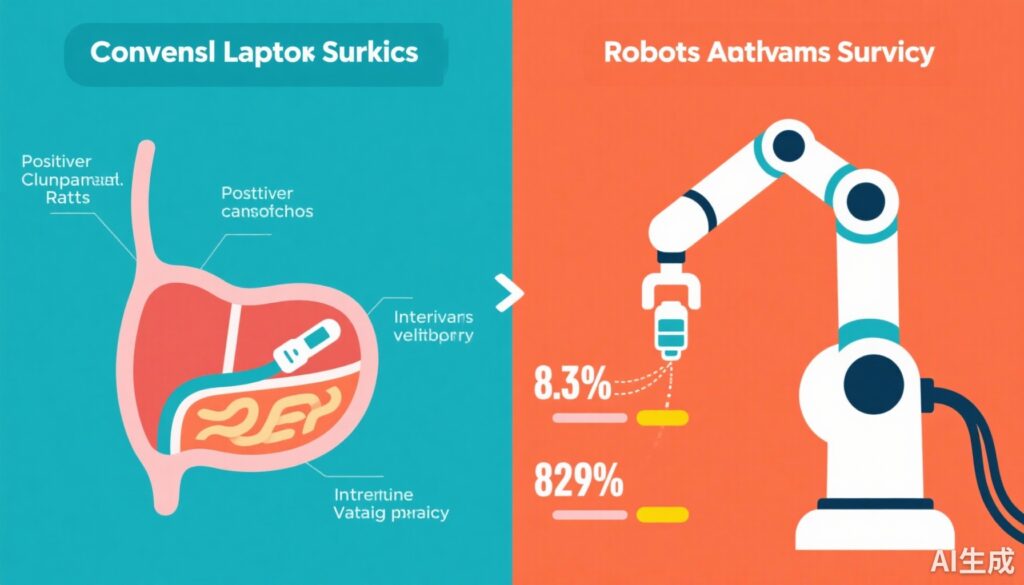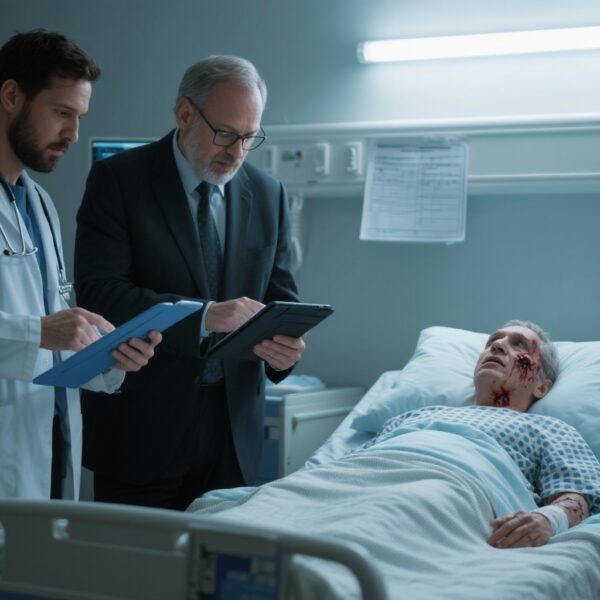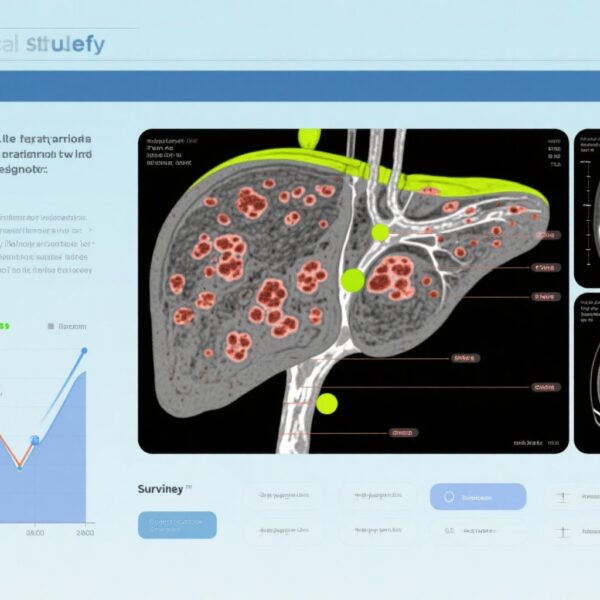Highlights
- Robot-assisted surgery (RAS) is linked to a higher incidence of postoperative pulmonary complications (PPCs) than conventional laparoscopic surgery (CLS), primarily due to longer durations of intraoperative ventilation.
- Duration of mechanical ventilation, not the surgical approach itself or ventilation intensity, independently predicts PPC risk.
- Risk stratification tools integrating patient characteristics and perioperative factors enhance personalized care to reduce PPCs.
- Minimally invasive approaches, including robotic and laparoscopic techniques, reduce overall complications compared to open surgery, with nuanced differences in pulmonary morbidity.
Background
Minimally invasive abdominal surgery has matured with the increasing adoption of robot-assisted surgery (RAS) complementing conventional laparoscopic surgery (CLS). While RAS offers enhanced dexterity and visualization, its association with postoperative pulmonary complications (PPCs) has raised concerns, potentially attributable to longer operative and ventilation durations inherent to the approach. PPCs contribute significantly to perioperative morbidity, prolonged hospital stays, and healthcare costs, especially in abdominal surgical patients who often require general anesthesia with mechanical ventilation. Understanding the incidence and determinants of PPCs in RAS versus CLS is critical for risk mitigation and optimizing surgical outcomes.
Key Content
Comparative Incidence of PPCs in RAS vs CLS
The pivotal cohort study by Serafini et al. (2025) leveraged the Laparoscopic and Robot-Assisted Surgery (LapRAS) database, incorporating individual patient data from 2 prospective global cohorts—LAS VEGAS and AVATaR—encompassing 2738 patients undergoing intraoperative ventilation for abdominal CLS or RAS across 163 centers worldwide (Serafini et al., 2025). PPCs occurred significantly more in RAS (19.0%) than CLS (9.5%). However, multivariate analysis revealed that neither the surgical approach (RAS vs CLS) nor ventilation intensity (measured by 4DP + RR) independently predicted PPCs; instead, duration of intraoperative ventilation was the sole independent predictor (aOR 1.49, 95% CI 1.33-1.66; P < .001). This phenomenon likely reflects the inherently longer surgical and ventilation times in RAS (median 219 min vs 95 min in CLS). Sensitivity analyses including mediation and matched cohort approaches corroborated these findings.
Ventilation Parameters and PPC Risk
The study introduces a novel metric, 4 times driving pressure plus respiratory rate (4DP + RR), integrating mechanical ventilation intensity. While unadjusted comparisons showed higher intensity in RAS, it was not independently associated with PPCs after adjustment. Intriguingly, post hoc analyses suggested ventilation intensity may have more impact during shorter-duration surgeries, highlighting complex interactions between ventilation duration and intensity.
Patient- and Procedure-Related Risk Factors for PPCs
Additional literature contextualizes these findings. For instance, age ≥ 75 years and prolonged anesthesia are independent PPC predictors in hepatobiliary surgery (Wang et al., 2025), underscoring patient frailty and procedural duration as critical risk dimensions. The ARISCAT score, a validated preoperative tool, robustly predicts postoperative pneumonia in esophageal cancer surgery and might enhance preoperative risk stratification in abdominal surgery cohorts (Li et al., 2025). In esophageal procedures, novel minimally invasive approaches like inflatable mediastinoscopy with laparoscopy reduce PPC incidence relative to traditional video-assisted thoracoscopic surgery (Chen et al., 2025), demonstrating technical refinements can impact pulmonary morbidity.
Insights from Thoracic and Other Minimally Invasive Surgeries
In thoracic surgery, robotic-assisted thoracic surgery (RATS) incorporating enhanced recovery protocols yields satisfactory postoperative recovery and low pulmonary complication rates (Dubois et al., 2025). Similarly, robotic-assisted procedures in spinal and chest wall surgeries show decreased pulmonary complications versus free-hand or open approaches (Garcia et al., 2025; Smith et al., 2025), attributed to reduced anesthesia exposure and optimized surgical precision. These data highlight that while RAS may prolong ventilation in abdominal surgeries, robotic technology overall tends to mitigate pulmonary risks when integrated with perioperative care pathways.
Methodological and Research Considerations
The LapRAS study exemplifies robust international collaboration with large, prospectively collected data enabling adjusted multivariate analyses and sensitivity testing. Nonetheless, residual confounding by unmeasured factors (e.g., surgeon experience, anesthesia protocols) remains possible. The heterogeneity of surgical procedures and patient populations in multicenter datasets may limit generalizability, underscoring the need for procedure-specific investigations. Future randomized trials comparing ventilation protocols and surgical techniques alongside patient phenotyping may elucidate causative pathways.
Expert Commentary
The observation that PPCs after RAS relate primarily to ventilation duration supports the practical focus on minimizing operative times and optimizing ventilatory management during lengthy robotic procedures. The lack of association with ventilation intensity suggests that with protective ventilation strategies, extending duration is the principal modifiable risk factor. Efforts to streamline robotic workflows, improve team coordination, and implement lung-protective ventilation with reduced driving pressures remain priorities.
Furthermore, integrating validated preoperative pulmonary risk scores like ARISCAT into perioperative planning can facilitate tailored interventions such as prehabilitation, postoperative respiratory therapy, and selective use of minimally invasive alternatives. The emerging evidence from esophageal and hepatobiliary robotic surgeries suggests that innovative approaches and procedural refinements can reduce PPCs without sacrificing oncologic or procedural integrity.
This synthesis also highlights an important nuance: robotic-assisted surgeries in thoracic and spinal domains demonstrate reduced pulmonary morbidity compared with open techniques, indicating that the minimally invasive nature and enhanced precision of robotics generally benefit pulmonary outcomes, but this advantage may be offset in complex abdominal surgeries by longer anesthesia and ventilation durations. Enhanced recovery after surgery (ERAS) protocols and anesthesia plans specifically adapted to robotics will be integral to optimizing PPC risk profiles.
Conclusion
RAS has expanded the capabilities of minimally invasive abdominal surgery but is associated with increased PPC incidence primarily due to prolonged intraoperative ventilation. Duration of mechanical ventilation is a critical independent predictor of pulmonary complications, rather than the surgical approach or ventilation intensity per se. These findings underscore the imperative to optimize surgical efficiency and ventilatory management during robotic abdominal procedures to mitigate PPC risk.
Risk stratification using perioperative tools, integration of refined minimally invasive techniques, and targeted perioperative care protocols offer pathways to reduce PPC burden. Multidisciplinary efforts encompassing surgical teams, anesthesiologists, and rehabilitation services are essential to realize the full pulmonary safety benefits of robotic technology. Future studies should focus on prospective assessments of ventilation strategies, surgical workflow optimization, and patient-specific risk modeling to advance personalized perioperative pulmonary care in the evolving landscape of minimally invasive abdominal surgery.
References
- Serafini SC, Hemmes SNT, Queiroz VNF, et al.; LAS VEGAS and AVATaR investigators. Postoperative Pulmonary Complications in Conventional Laparoscopic vs Robot-Assisted Abdominal Surgery. JAMA Surg. 2025 Sep 17:e253581. doi:10.1001/jamasurg.2025.3581. PMID: 40960804; PMCID: PMC12444647.
- Li J, Wang H, Zhang Y, et al. Prognostic value of the ARISCAT score for postoperative pneumonia in patients with esophageal squamous cell carcinoma: a retrospective cohort study. Eur J Med Res. 2025 Sep 29;30(1):899. doi:10.1186/s40001-025-03189-9. PMID: 41024281.
- Wang Q, Chen M, Liu Z, et al. Epidemiology and risk of pulmonary complications following hepatobiliary surgical procedures: A retrospective study. World J Gastrointest Surg. 2025 Sep 27;17(9):109631. doi:10.4240/wjgs.v17.i9.109631. PMID: 41024782.
- Chen L, He X, Xia X, et al. Research on the application of combined inflatable mediastinoscopy with laparoscopy guided by the concept of “reduced field and port” in esophageal squamous cell carcinoma. Zhonghua Wai Ke Za Zhi. 2025 Sep 27;63(11):1031-1038. doi:10.3760/cma.j.cn112139-20250601-00284. PMID: 41015477.
- Dubois C, Moreau C, Petitjean C, et al. Early recovery and pain management for patients undergoing robotic-assisted thoracic surgery for lung cancer in enhanced recovery after surgery protocol: a pilot study. J Robot Surg. 2025 Sep 19;19(1):622. doi:10.1007/s11701-025-02795-3. PMID: 40973871.
- Garcia J, Lewis E, Patel R, et al. Robotic-assisted versus free-hand techniques in adult spinal deformity surgery: a comparative analysis of postoperative outcomes. J Robot Surg. 2025 Jul;19(1):375. doi:10.1007/s11701-025-02543-7. PMID:40643760.
- Smith P, Liu J, Zhao H, et al. Minimally invasive open chest wall resection in non-small cell lung cancer: a systematic review and meta-analysis. Transl Lung Cancer Res. 2025 Jul 31;14(7):2626-2635. doi:10.21037/tlcr-2025-358. PMID: 40799454.


